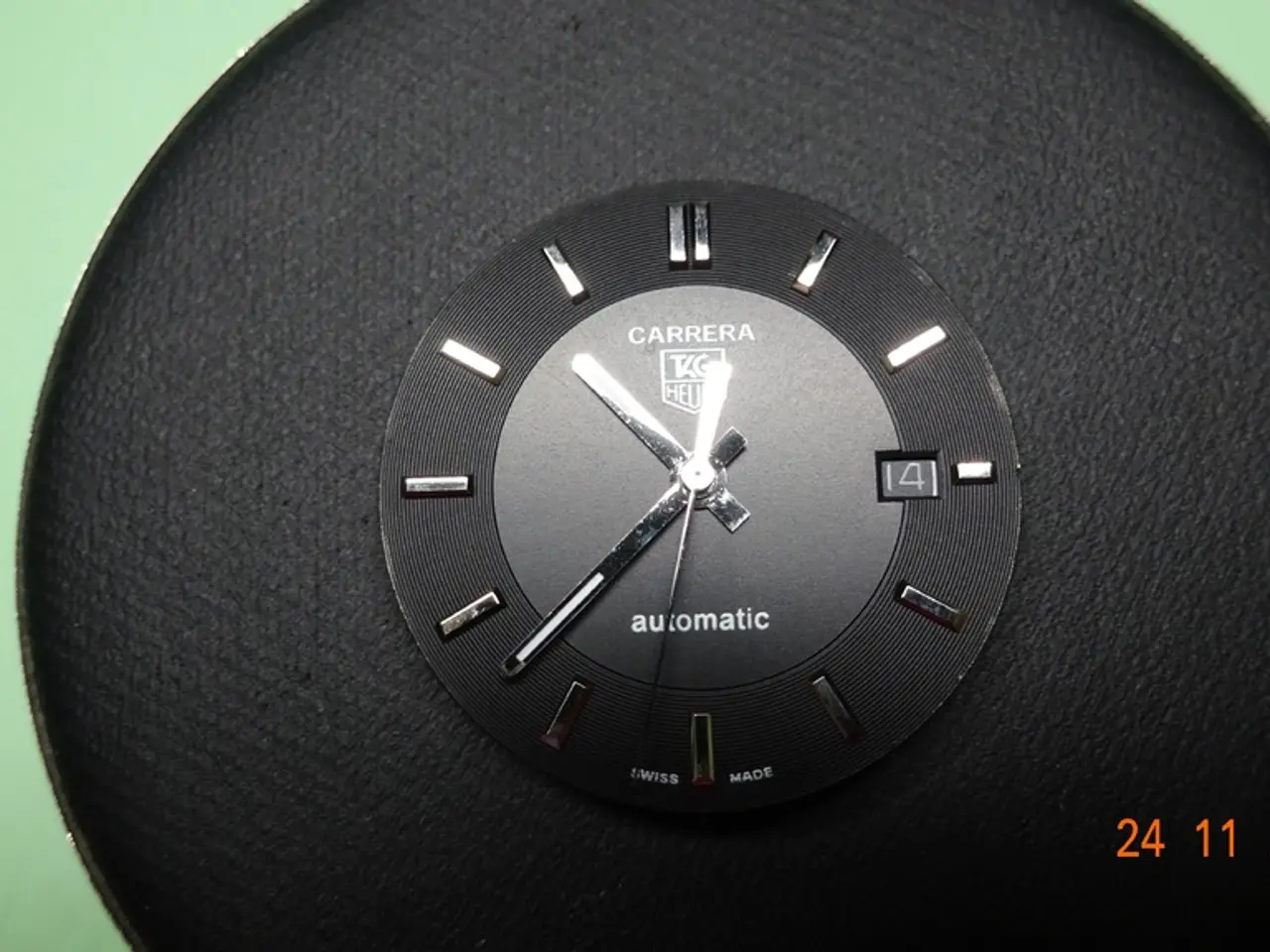Clockmaker's dilemma: Maintaining, safeguarding, or revitalizing timepieces
=====================================================================
In the world of antique clocks, a philosophical debate rages on: when does a clock cease to be the same clock after repairs or restorations? This question, often illustrated by the example of a vintage clock, is closely related to the "Ship of Theseus" paradox, a philosophical argument first posed by Greek philosopher Plutarch.
When working on a customer's clock, it's essential to present several options regarding the repair of the movement and addressing case issues. Repair, restoration, and conservation are three methods used to maintain antique clocks, each with different levels of intervention and acceptance among collectors.
A common repair practice is replacing a bob wire with an adjustable bob wire and a finishing nail with a brass taper pin. However, these seemingly simple repairs can provoke heated debates in some circles. Some argue that these changes are part of the clock's history, while others believe they alter its originality.
The lantern clock, a type of clock widely used in English private homes in the 17th century, is highly collectible today. Interestingly, most lantern clocks have been altered, even those considered "genuine." This raises the question: does a clock remain the same after significant repairs or restorations, or does it become a different object entirely?
One of the key philosophical arguments surrounding this issue is the Principle of the Identity of Indiscernibles (PII). This principle states that if two things are indiscernible in all their properties, they are identical. However, this principle is controversial and linked to how identity and difference rest on intrinsic properties of substances rather than relations between them.
The identity of the Bluenose II, a sailing ship that is a provincial symbol in Nova Scotia, has also been a topic of debate. The ship was rebuilt with new materials in 2018, raising questions about whether it retains its identity. This relates to wider metaphysical issues of identity across time and what constitutes the essence of an object.
D. and J. Benson, specialists in early English clocks, believe in retaining changes made to clocks as part of their history rather than reconverting them to former guises. They argue that changes that bring a clock back to its original look and function make it more "original."
On the other hand, some argue that a repair or restoration can be considered a form of conservation, but each method has different levels of intervention and acceptance among collectors. Undoing a poor previous repair can be considered an overly invasive procedure, depending on the extent of the damage and the documentation of the repair.
The decision to clean a clock case or not can also be a matter of personal preference. Some argue that patina, often seen as dirt, is just another word for age and character. Meanwhile, minimal invasive intervention is a term used to describe the level of repair, restoration, or conservation that should be done to a clock without significantly altering it.
In conclusion, the identity dilemma in clocks asks whether a clock is fundamentally the same after significant repairs or restorations, and whether changes that bring it back to its original look and function make it more "original." This debate encourages us to consider what criteria—material composition, structural continuity, function, or historical continuity—are fundamental to an object's identity. The vintage clock, with its ticking heart and rich history, continues to be a fascinating subject for philosophical inquiry.
References:
[1] J. W. N. Watkins, "Identity and Individuation," Mind, New Series, Vol. 73, No. 258 (Jul., 1964), pp. 354-377.
[3] A. C. Grayling, "The Quest for Identity," The Philosophical Quarterly, Vol. 52, No. 207 (Oct., 2002), pp. 485-500.
- In the realm of health-and-wellness, the debate on the identity of a restored antique clock parallels discussions about mental health: when does a person cease to be the same person after therapy or personal growth? This question, often illustrated by the example of an individual, is closely related to the "Ship of Theseus" paradox.
- Similarly, the science of horology can benefit from exploring the Principle of the Identity of Indiscernibles (PII) as it applies to antique clocks. This principle, controversial in its link to intrinsic properties of substances, could offer insights into the identity of complex mechanical systems like clock movements.
- Mental health practitioners might find the debate on clock restoration useful as it raises questions about preserving originality versus accepting change. The seemingly simple decision to clean or not clean a clock case mirrors the choice between acknowledging past struggles or promoting forgiveness and healing in therapy.




